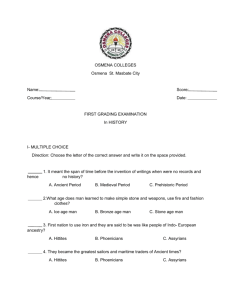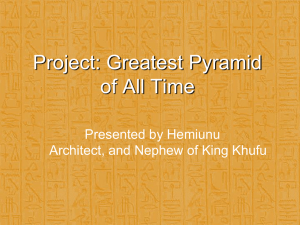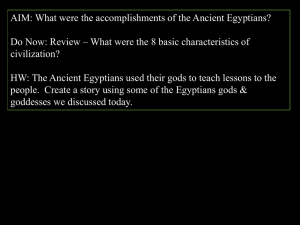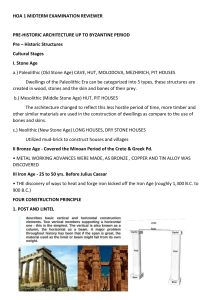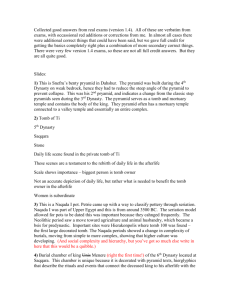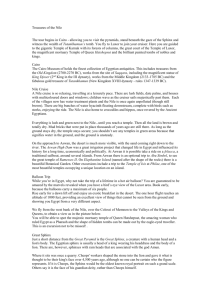Pyramid - definitions - Elmwood Park Memorial Middle School
advertisement
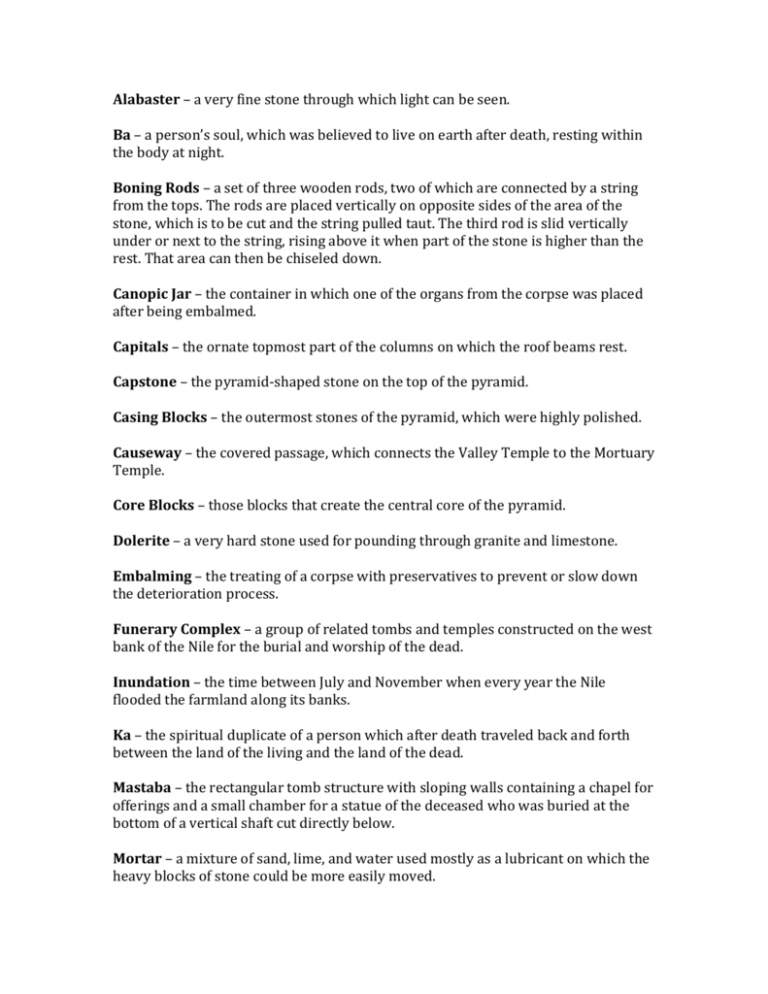
Alabaster – a very fine stone through which light can be seen. Ba – a person’s soul, which was believed to live on earth after death, resting within the body at night. Boning Rods – a set of three wooden rods, two of which are connected by a string from the tops. The rods are placed vertically on opposite sides of the area of the stone, which is to be cut and the string pulled taut. The third rod is slid vertically under or next to the string, rising above it when part of the stone is higher than the rest. That area can then be chiseled down. Canopic Jar – the container in which one of the organs from the corpse was placed after being embalmed. Capitals – the ornate topmost part of the columns on which the roof beams rest. Capstone – the pyramid-shaped stone on the top of the pyramid. Casing Blocks – the outermost stones of the pyramid, which were highly polished. Causeway – the covered passage, which connects the Valley Temple to the Mortuary Temple. Core Blocks – those blocks that create the central core of the pyramid. Dolerite – a very hard stone used for pounding through granite and limestone. Embalming – the treating of a corpse with preservatives to prevent or slow down the deterioration process. Funerary Complex – a group of related tombs and temples constructed on the west bank of the Nile for the burial and worship of the dead. Inundation – the time between July and November when every year the Nile flooded the farmland along its banks. Ka – the spiritual duplicate of a person which after death traveled back and forth between the land of the living and the land of the dead. Mastaba – the rectangular tomb structure with sloping walls containing a chapel for offerings and a small chamber for a statue of the deceased who was buried at the bottom of a vertical shaft cut directly below. Mortar – a mixture of sand, lime, and water used mostly as a lubricant on which the heavy blocks of stone could be more easily moved. Mortuary Temple – the temple closest to the pyramid in which certain ceremonies were performed before the body of the pharaoh was taken into the pyramid. This temple also served as the home of the Ka. Mummification – the process of embalming and preserving a dead body and its vital organs. Packing Blocks – blocks placed on the steps of the core on which the casing stones are then placed. Pharaoh – an Egyptian king. Plumbline – a weighted string which because of gravity will always hang perfectly vertical. Portcullises – the granite slabs that were lowered between two grooves to seal the entrance to the tomb after the pharaoh’s burial. Resin – a substance obtained from plants and used to coat the corpse to prevent decomposition. Rocker – a wooden frame on which a block of stone was placed before being finished so that it could be more easily moved around. Sarcophagus – the stone coffin in which the wooden coffin containing the pharaoh’s mummy was placed. Temenos Wall – the thirty-foot-high wall built around the base of the pyramid. These walls were originally built around entire funerary complexes. Valley Temple – the temple on the banks of the Nile to which the body of the pharaoh was first brought.
